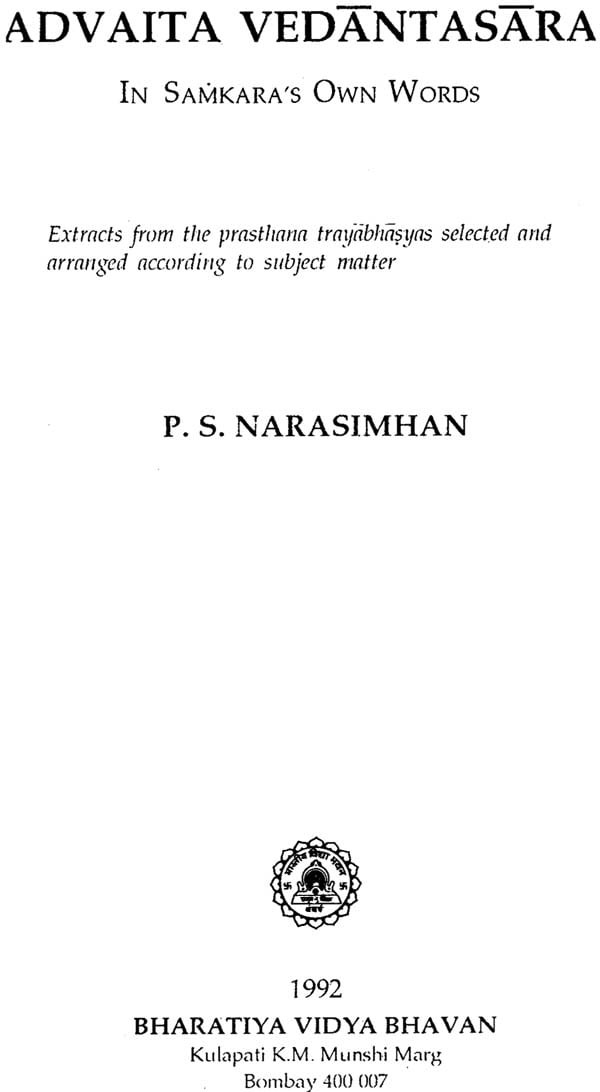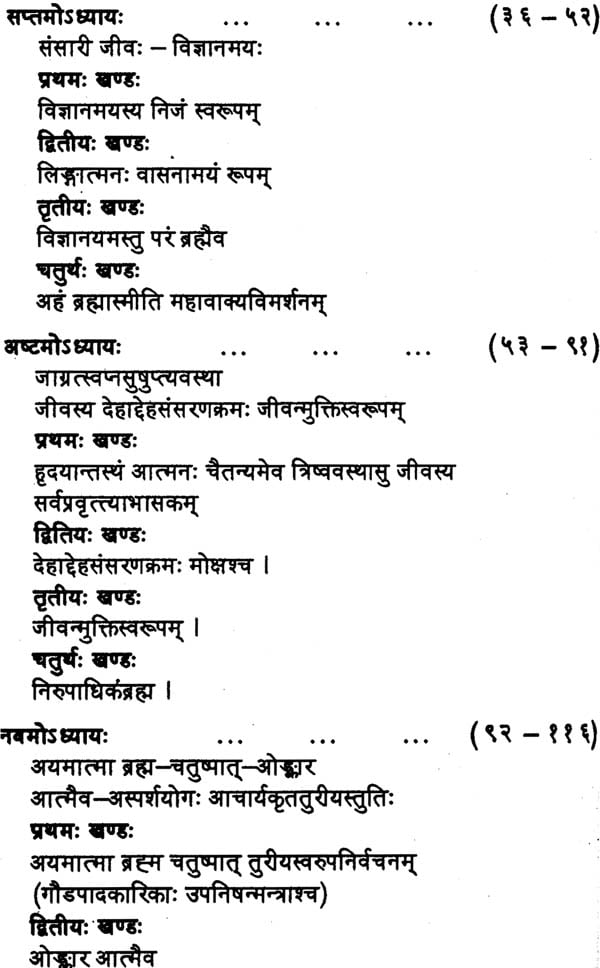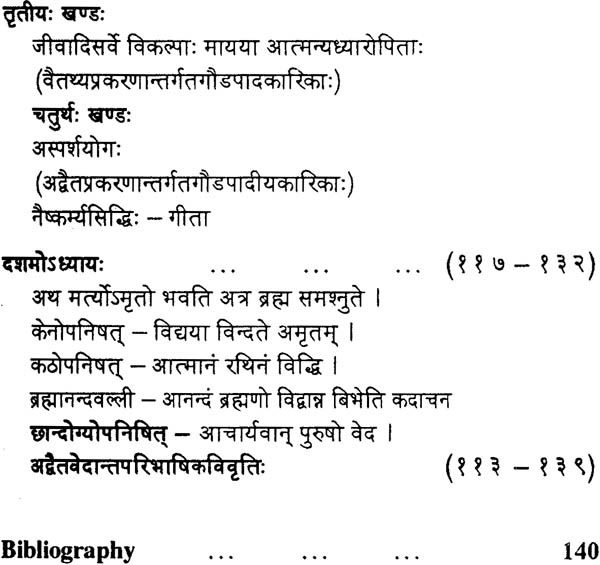
अद्वैत वेदान्त सार: Advaita Vedanta Sara (In the Words of Samkara)
Book Specification
| Item Code: | NZE135 |
| Author: | पी. एस. नरसिम्हन (P. S. Narasimhan) |
| Publisher: | Bharatiya Vidya Bhavan |
| Language: | Sanskrit Only |
| Edition: | 1992 |
| Pages: | 139 |
| Cover: | Paperback |
| Other Details | 8.5 inch X 5.5 inch |
| Weight | 190 gm |
Book Description

Sri. P.S. Narasimhan took his M.A. degree in economics from University of Madras in 1933 and taught economics in Loyola College. Madras 1933 to 1945. In 1945 he joined the international Labour Office, Geneva. and served the international Labour Office Geneva. and served that orgnisation in various capacities until 1973.
In 1968, when reading an English translation of the Katha Upanisad, the verse "The moment all his cravings cease, man overcomes death and begins to enjoy the bliss of immortality" made a deep impression on him adn kindled his interest in the study of the Upanisads. During the past several years Sri Narasimhan has been studying various works on Advaita Vedanta such as the commentaries of Vidyaranya and Suresh-waracharya.
This book is meant for those serious students of Advaita Vedanta who have a working knowledge of Sanskrit but have not the time to study the original texts and commentaries in full. An attempt has been made to bring together the most lucid and comprehensive comments of Samkara on the various aspects of Vedanta under ten principal themes in their logical order In this manner it is hoped that this book will serve as a guide to the most appropriate mantras in the most appropriate Upanisads More serious students may then find their way through the full commentaries more easily.
This compliation is the result of my own experience of the real struggle I had in trying to study the Advaita philosophy as interpeted by Samkara. The English publications did not really bring out the meaning of Sanskrit expressions such as prajnana, vidya, maya, etc.
Although I had a good working knowledge of Sanskrit I found the commentaries difficult to understand and follow. In the first place there are three commentaries to be studied, the first and most important being Samkara's commentaries on the ten prinicipal Upanisads; the second, his commentary on the Brahma Sutra and the third, his commentary on the Gita. The basic features of the Advaita philosophy are not developed in a a systematic order but are developed purely as interpretations of the texts. For example, the basic concepts of what knowledge (vidya) is, is interpreted fully only in Samkara's introducation to Chapter 2 of the Brhad-aranyaka Upanisad. The concept of Liberation to be achieved solely by knowledge is fully developed in his in his commentaries on the Advaita Prakarana of the karikas to the Mandukya Upanisad. Secondly, a major portion of the commentaries deals with explaining and rebutting the interpretations of other philosophical scholls such as the Mimamsaka, Vaisseika and Samkhya which are not of much interest to the average contemporary reader. Thirdly, because the commentaries follow the order of the Upanisads there is considerable repetition and one does not know in which particular place an important idea is developed and expounded fully.
In this compilation, therefor, I have sought to bring together the most lucid and comprehensive comments of Samkara on the different aspects of Advaita Vedanta under ten main themes in their logical order. These themes are briefly explained in the Synopsis that follows this Preface. For the the convenience of the student who wants to know which particular texts of the commentaries have been identified at the end of each passage extracted from the bhasyas. It is my humble hope therefore that this publication would be of real help to those students, having a working knowledge of Sanskrit, who wish to study the voluminous commentaries in full; it is hoped that this compilation will serve initiall as a guide to choosing the most appropriate mantras in the most appropriate Upanisads; the more serious student may also then find his way through the full commentaries more easily. In the Upanisads and also in Samkara's commentaries a number of Sanskrit terms such as atma, prana, samsara, hridaya etc. are used as technical terms with special meanings, Such terms also have different meanings depending upon the context. For the convenience of the reader, I have included at the end an elucidation of the reader, I have included at the end an elucidation of the terms as provided by Samkara himself in his commentaries.
I lost my vision about ten years ago and have therefore had to seek the help of Sanskrit Pandits to read the texts to me during the course of my study. In this connection I would like to gratefully acknowledge the help that I have received from the late Shri M.Lakshmanachar, retired teacher of Sanskrit in the Karnataka Education Service and from Sri M. lakshminarayana Sarma, retired lecturer in Sanskrit, Karnataka Educational Service. Sri Sarma's help has also been invaluable in reading, re-reading and arranging the passages selected and in getting the manuscript ready.
Dr.B.V. Venkata Krishna has helped me in reading the proofs and seeing the book through the press. I would like to thank him for this invaluable help. My son, Dr. P.N. Shankar, assisted in the preparation of the synopsis in English and in matters connected with the publication of the book. But for his help and cooperation it would have been impossible for me to publish this work. Finally, my thanks to Shri C.K.Venkataraman and the Bharatiya Vidya Bhavan for so courteously undertaking the publication.









